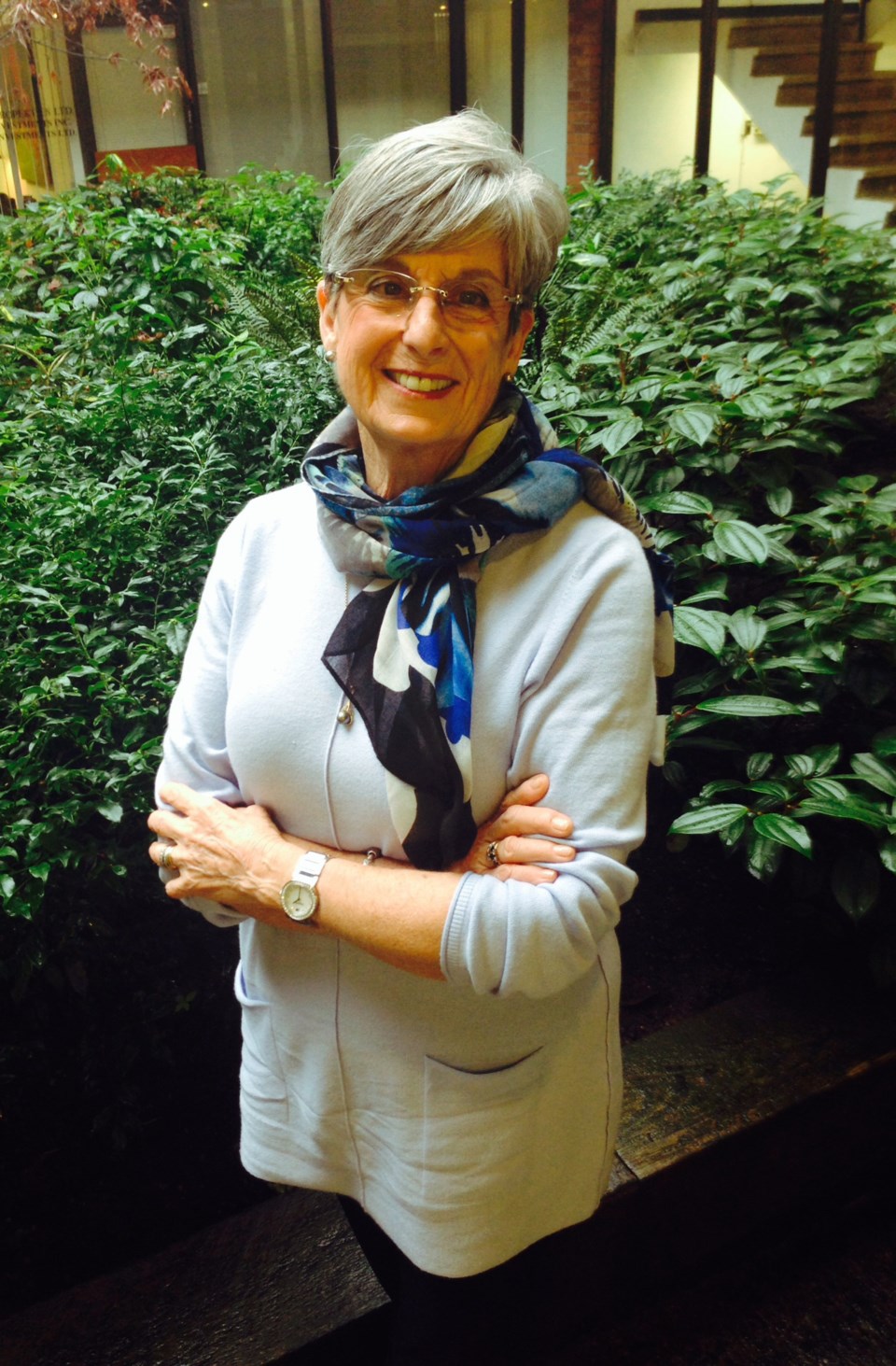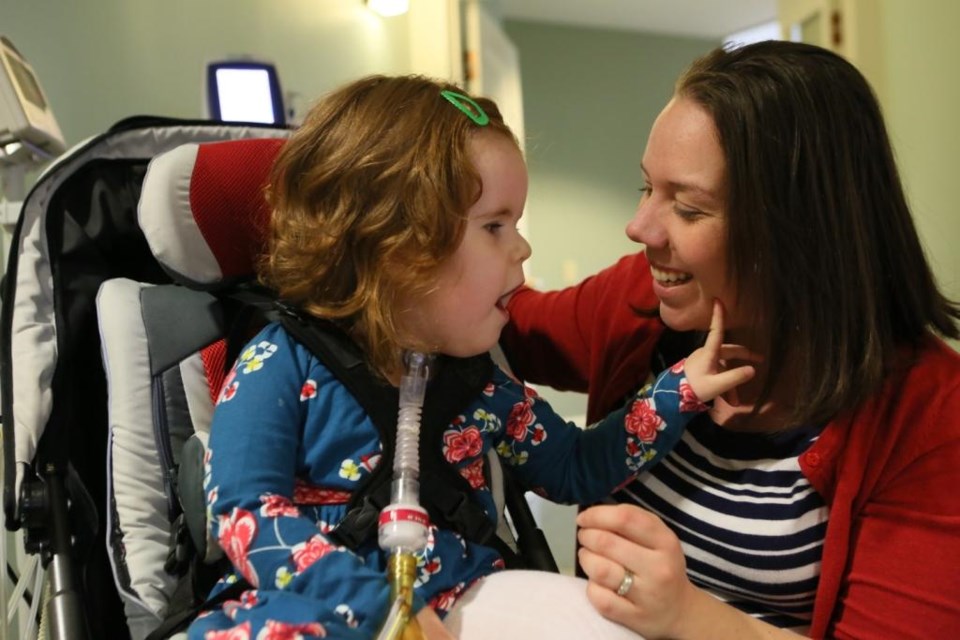One thousand and 70 hours of Hazel Mackie’s life have been spent in the school room of Canuck Place Children’s Hospice. Or, if not there, playing with the children in the sprawling garden outside, or helping them with their breakfast in the dining room, or consoling them in a quiet corner when they are most in need of hugs.
Mackie is a Canuck Place family volunteer. Every other week, the retired health care worker arrives at the hospice for her shift, ready to guide a new child with a life-limiting illness through their routine.
“The philosophy at Canuck Place is that children benefit from purpose in their everyday activities. This includes school and play,” says Mackie, a slight, grandmotherly Scottish accent peeking through. “School-aged children, including patients and their siblings, attend school while at Canuck Place, and because I volunteer in the mornings, I have the privilege and joy of working in the school room with the teacher.”

Located in a transformed Shaughnessy Heights heritage home, Canuck Place opened its doors in 1995 to become the first free-standing hospice for children in North America. It receives children with progressive, terminal illnesses such as cancer, muscular dystrophy, and cystic fibrosis, congenital syndromes, and metabolic diseases, with the offerings of temporary 24-hour respite care, to give families a chance for rest and renewal; transition care for children who are ready to leave the hospital, but whose homes or communities are not yet equipped to provide the necessary services; symptom management aimed at the adverse physical and emotional toll of the child’s illness or treatment; end of life care for both child and family when the child’s death is imminent; and grief support throughout the entire process for the child and their family members.
Having served more than 1,500 children and families in its 20 years of service, Canuck Place is considered a world leader in pediatric palliative care. And a large part of that is due to the tens of thousands of volunteer hours like Mackie’s.
“I knew when I left [my career] that I was going to miss my clients,” says Mackie of why she chose the hospice. “I worked primarily with the senior population, and I was so looking forward to being a grandparent at that point, that I was looking at changing my focus from gerontology to younger people.”
She learned about the opportunity at Canuck Place from friends, and started volunteering at the facility in 2003. Since then, Mackie has done everything from playing Mrs. Claus at the Christmas parties to playing ball hockey with seven-year-old boys. She’s chopped vegetables in the kitchen and done crayon art with the kids (a crafting skill she quickly put to use with her own grandchildren). For four hours a day, she sings, picks flowers, cuddles, and learns, and over the nearly 10 years, feels she has become part of the Canuck Place family.
“When I walk into Canuck Place any morning to do my shift,” Mackie says, “I feel like I’m walking into my own home.”
She starts each shift with a quiet moment in front of the fireplace on the main floor, where candles, cards, and photos honour the lives of the children that have recently passed. And then she heads upstairs, where the limitless bounds of childhood imagination and exuberance awaits.
One day, Mackie recalls, she was standing near the back door when a grandmother drove up in a van with a little girl. The girl, who is hearing-, sight-, and mobility-impaired, was banging on the car windows in anticipation of arrival, and Mackie approached to help. She opened the door and the girl clambered out of her seat, raced over to the elevator door and excitedly pressed the button to go up. Mackie kept pace, and when the elevator doors opened, the girl shot out onto the second floor, running straight into the arms of the nurses before making a dash for her room, where she promptly curled up into her bed, asked for the blinds to be closed, and tucked herself in for sleep.
“It was just obviously a space of total comfort for her,” says Mackie softly. “I’ll never forget that one.”
And while Mackie often falls back on her time as an occupational therapist, health care experience is not required nor necessary to volunteer. Each one of the 350 Canuck Place volunteers, from family and peer volunteers, to kitchen, garden, and reception and more, have grown into their role. Mackie, for example, eventually discovered she has a gift for connecting with non-verbal children.
“I think that’s all part of the support system that we have as volunteers, from the people that we are being supported by,” she says. “ The volunteer program is second to none, because of the training program that we have, and the selection process, too.”
As for why she volunteers at all, Mackie merely smiles and shrugs.
“I think it’s something that you have in you. I love being involved; I’m a busy person. It just adds enrichment to your life. And that’s why I love Canuck Place so much,” she adds. “I got so much pleasure out of my work, when I was working, that I just feel… you have skills. As all of the volunteers have. You have skills that are useful.”
During cold and flu season, the need for able volunteers for many organizations increases. To apply as a volunteer go to CanuckPlace.org. You can also support Canuck Place by donating to its ‘Light Up Their Lives’ campaign, running now until the end of the year.




